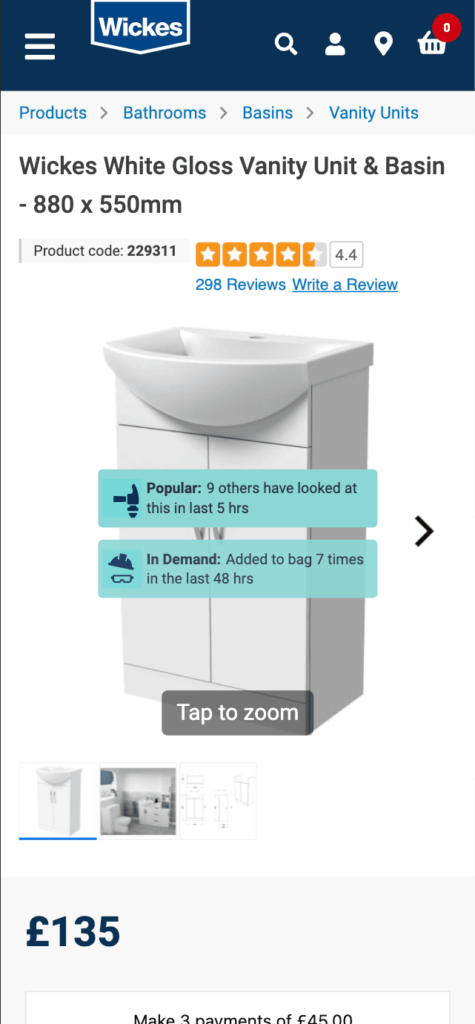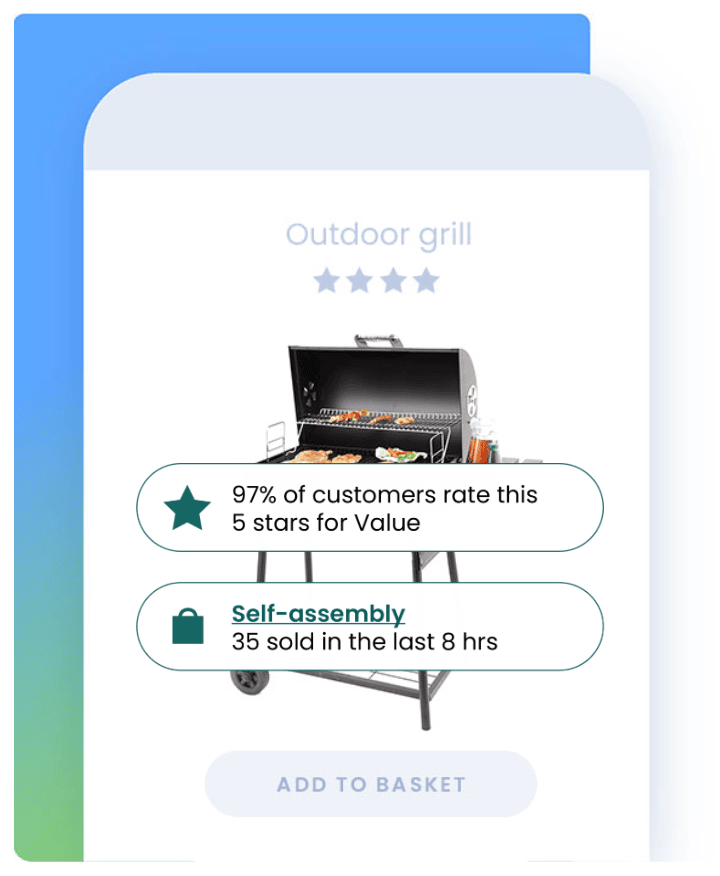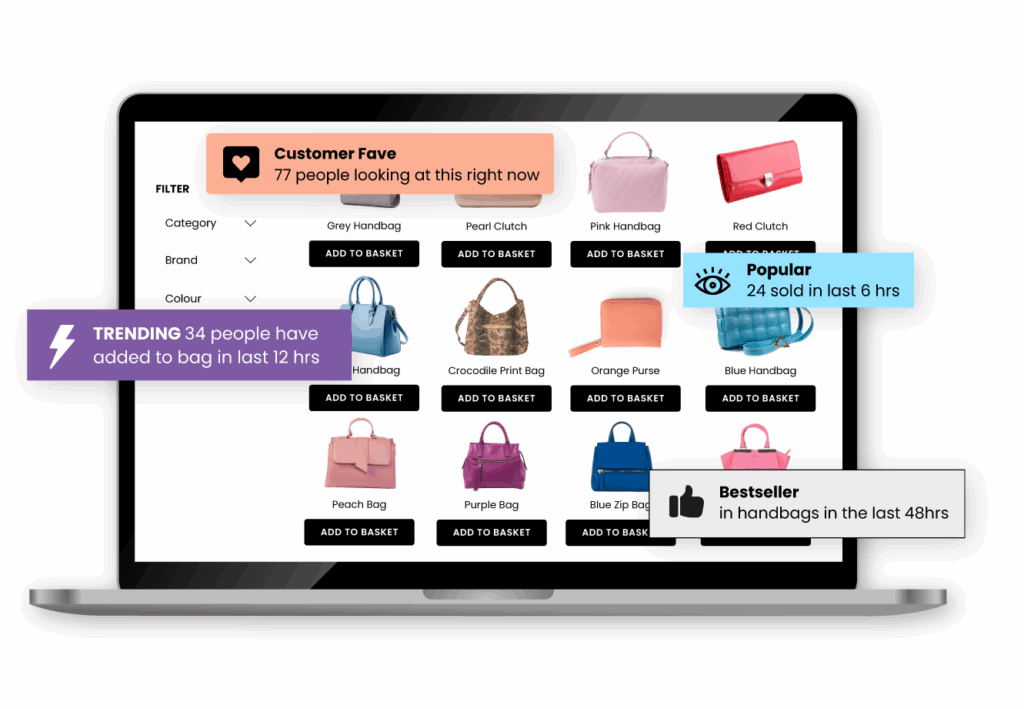The UK DIY and home improvement market saw revived growth as homeowners’ confidence and budgets to revamp their properties returned as interest rates began to fall in 2024. With further base rate cuts expected in 2025, as well as growth in the housing market, home improvement sales are expected to increase further this year.
According to Mintel’s latest report on the sector, DIY specialist sales rose 1.7% in 2024, with 85% of consumers purchasing DIY products in the past year. That compared to a fall of 1.1% in 2023 when homeowners and renters focused on smaller-ticket projects, such as painting and decorating.
Between 2024-29 growth of 16% is expected in a sector that is estimated to be worth around £27 billion for home improvement alone. Add home décor to that estimate, and the sales potential available is even higher.
Why eCommerce is critical to DIY and home improvement success
While in-store remains the most popular way to buy, online DIY and home improvement sales are thriving. Technologies such as Augmented (AR) and Virtual Reality (VR), help consumers better plan and execute their DIY projects, while AI-powered personalisation helps them more easily find the right products for their revamps. The Mintel report also found that social media inspires younger consumers, particularly in their DIY and home improvement plans, as they look online for inspiration and ideas.
So why is home eCommerce thriving in what has traditionally been a store-based sector? Convenience, selection, product information and price are important criteria that take time for consumers to research. Much of this work happens in the comfort of the very home they want to revamp. Online shopping for DIY and home improvement goods allows shoppers to easily find inspiration, research, and shop for home décor products and DIY supplies from their sofa. And, still conscious of their budgets, price-savvy consumers can also use the online channel to shop around to find the best value for their home projects.
The drawback of eCommerce for DIY and home shoppers is that they are not able to fully assess key features like quality and size in person or speak to in-store sales assistants for advice. Tools that can bridge the gap between in-store and online are therefore essential. Home improvement and home décor retailers, including Wickes, Robert Dyas, Lakeland, M&S and Debenhams leverage Social Proof to bring the in-store experience to online shopping, helping shoppers make better purchase decisions and significantly increasing conversion rates.
Trends and purchase triggers in the DIY and home improvement eCommerce category
To optimise sales in the DIY, home improvement and home decor eCommerce categories, retailers and brands must stay on top of trends and shopping triggers that influence shoppers in this sector.
- Home purchases and renovations are catalysts for increased spending in the DIY, home improvement, and decor categories. Key milestones, such as the birth of a child which may necessitate a room revamp into a nursery, for example, are also common triggers for increased spending in such categories.
- Seasonality is critical. The demand for different types of DIY and home improvement products changes throughout the year. Easter, for example, tends to kickstart spring revamps and major DIY projects, while gardening sales peak from March to May as the weather gets warmer and plants bloom. Meanwhile, closer to Christmas, there is a high demand for smaller home decor and home appliance purchases.
- Sustainability matters. Sustainability is becoming more important to a growing segment of DIY and home improvement shoppers willing to pay a premium for eco-friendly products.
- Social media and commerce. Channels including TikTok, Instagram, YouTube and Pinterest are go-to destinations for home eCommerce shoppers to find inspiration, ideas, and tips and get product recommendations for home design from peers and influencers. As a transactional channel, these platforms play a critical role in the DIY, home improvement and home décor shopping journey, from discovery to checkout and beyond.
- Niche marketplaces are particularly popular in the home and DIY market. By leveraging niche marketplaces, retailers and brands can target a very engaged and targeted audience that is specifically looking for DIY and home improvement products.
- Flexible financing. As consumers invest in revamping their homes, many are still conscious of affordability. To support them, many retailers and brands look to flexible and alternative payment options such as “buy now, pay later” to help shoppers feel more comfortable undertaking big-ticket projects with big-ticket price tags.
- Visualisation, augmented reality and guided selling. Shopper guides and visualisation tools that bring home purchases alive and show how products will look in the context of their home are key to differentiating from the competition and inspiring the customer early on in the shopper journey.
The power of social proof in DIY and home improvement
Whether a customer eventually purchases in-store or online, the digital touch points during the shopping journey’s exploration, research, evaluation and validation phases are extremely important. Customers tend to dedicate more time to researching and buying home and DIY supplies, materials and products than other items such as clothing, since these are usually bigger-ticket items and are more challenging to change if they get it wrong. As it’s their home, consumers also tend to be more emotionally invested in such purchases. eCommerce makes it easy for shoppers to find inspiration and compare home products.
In addition to the ability to inspire and compare, consumers want the confidence that they are making the right decision. With its use of social proof messaging, digitally-led home improvement retailer Wickes helps shoppers easily and quickly find what they are looking for, make a more confident decision and finalise the purchase.
Social influence throughout the shopping journey is important in converting browsing shoppers to loyal customers. Consumers are inspired by what others are buying and trust the actions and opinions of other shoppers. Throughout the shopping journey, social proof and product attribute messaging allow shoppers to easily spot bestsellers with real-time data, key features highlighted and aggregated reviews, ultimately increasing conversion rates.

Social proof in advertising and email marketing
Retailers and brands can engage would-be shoppers early in their browsing journey by leveraging social proof messaging in display ads and email marketing, augmenting product messaging, showcasing bestsellers and trends and sharing key product attributes to drive more traffic to their websites.

Search engines and PDP optimisation with social proof messaging
Today, many shoppers start their product search journeys on search engines. However, in the home improvement and DIY sector, the journey often also involves marketplaces and social media platforms such as Houzz and Pinterest, where consumers look to generate ideas for their projects.
Regardless of the origin of their arrival to your home eCommerce website, shoppers are likely directed to a product details page. This page should be optimised with the right information to help them make more informed and confident purchase decisions. Social proof helps by bringing key product information upfront with attribute messaging, as well as important data points such as how many people are purchasing the product, what’s popular and trending, aggregated ratings and reviews and more.
Instilling confidence and reinforcing purchase decisions with social proof messaging
Since many home improvement projects involve larger purchases – both in size and cost – it is crucial to instil confidence and reinforce to customers that they made the right choice. Retailers and brands can use social proof messaging to showcase how many other shoppers have bought the same product and highlight relevant product features, such as size. In return, shoppers make more informed buying decisions, reducing the inconvenience of having to return what might be large and bulky items and avoiding unnecessary project delays.
Delays to DIY and home improvement projects can also be caused by consumers not having all they need to complete a home revamp. Home and garden retailer Robert Dyas uses social proof messaging to instil confidence and help shoppers make better shopping decisions by highlighting product popularity and buying trends in home eCommerce.

Be prepared: Technology advances lead to continued online DIY and home improvement sales growth
As we saw earlier, technologies such as AI, AR, VR and social proof messaging help inspire and increase confidence to buy for DIY and home improvement online shoppers. The trends outlined earlier will further shape consumer preferences and the industry’s future.
To thrive, let alone survive, home décor and home improvement retailers and brands should optimise all digital touch points throughout the shopping journey. Those who tap into the power of social proof can deliver more engaging shopping experiences that convert – inspiring and helping shoppers make more informed and confident purchase decisions.
Brands and retailers that can adapt and align strategically with these trends will be well-positioned to excel in the evolving DIY, garden and home improvement landscape online and will grow sales as a result.



